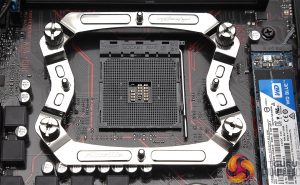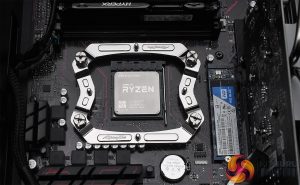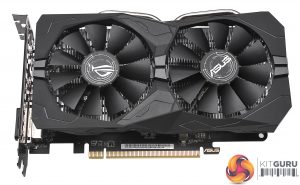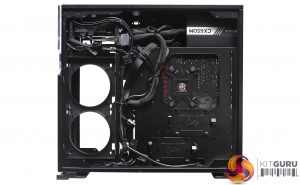Viglen has deployed one of AMD’s latest processors in this machine. The Ryzen 7 2700 is a brand-new part that introduces the second generation of AMD’s Zen architecture.
The new generation of chips moves the manufacturing process from 14nm to 12nm, which means increased efficiency – and more headroom for upping the clock speed. AMD has paired this development with more aggressive intelligent boosting that can apply higher speeds to more cores.
Elsewhere, there are new chipsets, faster memory speeds and improve latencies across the L2 and L3 caches.
The Ryzen 7 2700 usually runs at 3.2GHz with a boost peak of 3.9GHz, but Viglen has used the more efficient chip to do some overclocking – unusual but welcome in a business machine. The 2700 in this system now runs at 4GHz across all eight of its multi-threaded cores. That speed even manages to outpace the range-topping Ryzen 7 2700X, which has a 3.7GHz stock speed.
The overclocked, second-generation Ryzen chip compares well to rival systems. The Coffee Lake i3-8100 inside the PC Specialist machine runs at a reasonable 3.6GHz, but it has no Turbo capability and its four cores aren’t Hyper-Threaded, and the Overclockers UK Cobalt uses the unlocked i3-8350K that’s overclocked to 4.8GHz – but it still only has four cores.
The only chip to come close to challenging the Ryzen 7 2700 is the Core i5-8600K inside the Cyber Power Infinity X66 GTX, which costs £1,199. That Core i5 chip has six cores and has been overclocked from 3.6GHz to 4.3GHz.
Viglen has paired the Ryzen processor with 8GB of memory. That’s a solid amount for a mid-range, general-purpose PC, while the 3,200MHz DDR4 included here is very fast. However, Viglen has only used one stick of RAM, meaning the memory is forced into a single-channel configuration. That’s a mis-step that’ll impact performance.
Storage is fine, at least, with a 250GB Western Digital Blue SSD and a 1TB hard disk – a similar setup to most rival systems.
Graphical grunt comes from the AMD Radeon RX 560. The Asus-made card used in this PC comes from the Strix range, and it has a small overclock – so its 1,175MHz base clock has been bumped up by 100MHz.
Viglen has opted for the beefiest version of the RX 560, which means you get 1,024 stream processors and 4GB of memory – some versions of the card have 896 stream processors and half as much GDDR5.
It’s a solid 1080p gaming card, but this is one area where the Viglen faces some strong competition. The CyberPower and Overclockers UK rigs both include 6GB versions of the Nvidia GeForce GTX 1060, while the PC Specialist serves up a GTX 1070.
The components attach to an Asus B350-PLUS motherboard. It’s a solid mid-range ATX board that’s entirely adequate for work and general-purpose computing.
It has three free memory slots, several vacant SATA ports, and free PCI-Express x16 and x1 slots alongside an old-style PCI socket. That’s great for installing wireless cards or legacy hardware.
There are plenty of USB 3 ports at the rear, but this board isn’t without some minor quibbles. There’s no USB 3.1 Type-C connector at the back, and the board only has three audio jacks. There’s no second M.2 slot for adding faster storage, either. There’s also no wireless internet or TPM module.
The board also uses the B350 chipset. This chipset was actually introduced with the first generation of Ryzen parts, which means it’s technically been superseded. However, in a relatively modest machine like this it doesn’t cause any problems – you don’t miss anything valuable and you still get the full might of Ryzen 2’s performance.
 KitGuru KitGuru.net – Tech News | Hardware News | Hardware Reviews | IOS | Mobile | Gaming | Graphics Cards
KitGuru KitGuru.net – Tech News | Hardware News | Hardware Reviews | IOS | Mobile | Gaming | Graphics Cards






